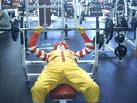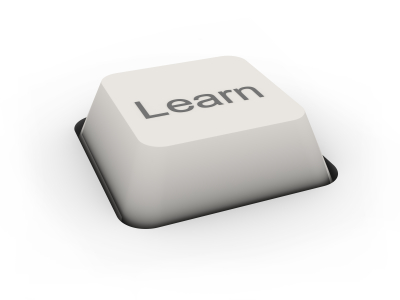One of my favorite topics to talk about when presenting/working with strength trainers is the bench press – more specifically, how much attention the bench press gets as one of the best exercises out there when in some ways it is actually one of the most potentially dangerous and over-rated exercises in the gym.
I have included the comment below not as a comment but as a complete blog entry. The author was kind enough to take the time to give his thoughts in a concise and organized manner, and I am happy to open the floor to discussion.
If you have missed the buzz on what is truly one of my favorite articles on this blog, you can view them by clicking here:
I have included Jonathons comment in full below and will respond in italics like this.
I should preface this with the note that you mysteriously failed to address the most competent response to this article. The thought occurs that if you are not willing to stand up for what you say, you should either censor these comments to prevent it from being so obvious, or (vastly better) say something better in the first place.
If you are referring to the comment by DOKOLA in The Bench Press pt 1 article, I actually really liked what he had to say. So much in fact that I made it a whole post (which leads to part 2 (if you haven’t read it yet) Bench Press article pt2
“Reason #1:
The Bench is an excellent test of your ability to push a bar off your chest while resting on a bench. Thats [sic] about it.”
No; it’s a means of developing (and on some level testing) your ability to exert force in a fundamental plane of motion. By the logic you present, squats are completely useless because they’re only a test of your ability to stand up with a perfectly-balanced load placed in a very specific position across your upper back, deadlifts have no redeeming qualities because they only develop strength in lifting a one-inch rod (again perfectly balanced) from above the mid-foot, and the standing vertical jump is a horrible indicator of athletic performance because no jump executed in a practical setting will ever be done with particularly good form. Given that time has shown very conclusively that the bench, squat, and deadlift work very well for developing total-body strength, and that the SVJ is a pretty potent indicator of athletic performance, your argument is clearly flawed (this can be addressed less empirically by pointing out that it’s an argument of exaggeration based on the principle of specificity, with regards to the technical side of an argument).
Great points. I see where I have failed to explain my logic sufficiently. I honestly do take the position that a single plane dominant exercise may not necessarily crossover to sports performance that requires other planes. While I do think that training the body to move in other planes of motion can prepare it better for different planes of motion, that isn’t the point I am trying to make here.
As you said, the exercises that work very well for developing total body strength – the squat, the deadlift and the standing vertical jump – work because they are all (more or less) full body movements that require the coordination of many muscle groups together to create a movement. The movement must also integrate and utilize the ‘core’ muscles (being careful not to specifically state what the ‘core’ is, since there are so many definitions). They are also fundamental movement patterns from a standing position, free of supports or benches.
“(1) The person being tackled is not shaped like a bar. (2) The person tackling is standing up. (3) The person being tackled is trying to move to one side (unlike a bench press which is straight up and down)”
(1) That doesn’t change the fact that the force is being exerted in the same plane as the bench press
General response here also includes the fact that a (competent) football coach does not rely exclusively on the strength coach’s pressing work to improve his players’ tackling; lifting is fundamentally GPP for athletes, and it’s the on-field practice (SPP) that constitutes the link between that and improving its application come game day. I’m never going to compete in the Glute-Ham Raise, but it’d be pretty stupid for me to avoid it on that basis.
I would agree that a competent football coach (and even some pretty bad ones) would not rely exclusively on press work alone – however, why is it that there are many drills to improve tackling skills, yet only a small handful of exercises to improve chest strength, most of which involve lying down on a bench with literally no alterations in vectors of force?
My point is that it is a useless measure of your strength, but maybe I am saying that it is useless in comparison to other more movement specific measures and exercises that could be used if effective tackling were the goal…
“Reason #2:
The bench in [sic] bench press immobilizes your shoulder blades and can make you more susceptible to shoulder issues as a result.”
With regards to the first clause, no, it doesn’t. The execution of proper technique immobilizes the shoulder blades; this is admittedly done to optimize the platforming effect of being on the bench, but since you’re more likely to suffer a shoulder injury from excessive scapular mobility than excessive scapular stability (see the work of Mike Boyle, Eric Cressey, Mike Robertson, et al), this is a moot point. This isn’t to say that a moderately mobile scapula is bad; it’s just to say that citing training oneself to stabilize the scapula as a reason that it biases you towards shoulder issues and should be avoided is absurd.
I will admit that this point needs significant rephrasing and you have made a good point here. When I stated this I was referring to the normal horrible form you see across the nation in gyms everywhere. There are ways to do the bench that reduce the chance of injury to the shoulder. Good point and I appreciate your position – the only 2 cents I would put in would be to state that both excess stability or mobility of the shoulder-blade are not as important as the ability to control the shoulderblade through space and time.
People experience shoulder issues indirectly from bench pressing because it biases the shoulder blades towards protraction (if back position isn’t maintained – common), somewhat excessive retraction and depression (if back position is maintained, though this is a lot rarer and much less problematic) and shortens and tightens the internal rotators and horizontal flexors. All but the second of these are issues present in virtually any untrained individual, and can be addressed through the use of various rows, external rotations, push-ups (hail the serratus anterior) and face pulls to fix them and negate any exacerbation of the problem. Thus, this is not a valid reason for not benching unless your shoulders are sufficiently dysfunctional that you must rehabilitate them first, or are beyond the point at which rehab ceases to be an effective option.
I agree 100% that a large range of exercises can prepare your body best to reduce the impact of the bench press . Great point again. I don’t see people often doing this but am glad that your knowledge has given you the tools to help others understand better what can be done to prepare the body for the movement of the bench press.
However, back to my point as stated before, if you are training to complete a movement (like anything that involves standing and pushing) that will move your shoulder-blades completely through their full range of motion, wouldn’t it make sense to develop strength through that full range? I don’t see a bench press training that (for the proper form reasons you have just stated)
“Reason #3:
You already have an overdeveloped chest.”
Not a valid reason, but because anyone who knows anything about proper bench form can tell you that it involves a very minimal pectoral contribution unless it’s performed with dumbbells (and even then, we’re looking at next to nothing compared to flyes and crossovers). Interestingly, you cite DB movements (including flyes) as a viable alternative. Proper bench form is outlined in various articles and videos by Tate, Wendler, Robertson, Cressey (and a number of others); these can be found quite easily on T-Nation and YouTube.
In your argument, you also cite some issues associated with my second paragraph for #2, conveniently failing to mention that you can fix half of them by integrating “horizontal” pulling (e.g. rows) and some minor shoulder prehab into the training program.
I honestly did not know that proper bench form uses the pectoral muscles minimally. I tried to find some information to support your position but could only find scientific research that supported the pec major as the prime mover of the bench press:
http://www.ergo-log.com/peckdeck.html (shows that bench is same on the chest as lats)
http://www.teenbodybuilding.com/mark4.htm (shows that dumbbell bench presses work the chest better than barbell bench presses)
Reason #4: Death
…no. The chances of even the slightest injury occurring in the presence of good form are virtually null, and none of them are even close to fatal. I can’t load the video for some reason, but I strongly doubt that it features a competent bencher with a competent spotter.
The potential for a stupid mistake on your part to land you in the hospital is not a reason not to do an exercise. If you bench correctly, there is absolutely no risk unless a third party actively interferes to create one.
I agree that a competent spotter with a competent bencher would reduce the range of injury significantly. If only the gyms were filled with such people as opposed to the alternative I often see struggling under bars every day in gyms across the country.
http://www3.interscience.wiley.com/journal/118519190/abstract?CRETRY=1&SRETRY=0
The above link cites 11 deaths between 1999 and 2002 in the USA.
—
In response to your suggested alternatives:
1) Not a better strength developer, but certainly useful.
2) No.
3) See #1. Also, why waste money (or, in a commercial gym, dignity) by using a bosu ball? A medicine ball works just as well, and if you can’t maintain anything resembling balance on it, you shouldn’t be doing elevated push-ups in the first place.
4) This is (and was at the time of the article being written) called a Pallof Press, and it’s a wonderful core exercise. Anything else…not so much.
To keep this quick, I won’t argue with you except to ask you to read the study below that clearly states cable presses as a suitable alternative for (and in some way superior to) the bench press.
http://www.freemotionfitness.com/wcsstore/Freemotion/Attachment/Education/Free_versus_Fixed_EMG.pdf
The commenter of this post has written more, but to keep things clear and concise I have removed that for a future blog post.
Thanks for your input Jonathon! I have learned much from reading your writings, and I hope to hear much from you in the future 🙂
Want to keep up to date with new articles?









I actually did miss the second article; as I noted in my email response, I wrote the original draft of the comment for a forum debate and (for reasons I can’t entirely fathom) decided to modify it slightly and post it here. I won’t address all the points in the response, however:
1) Yes, red does make things go faster.
2) As I’ll expand on in a moment, the chest isn’t particularly employed in the correctly-performed barbell bench press, and (by my admittedly limited understanding) doesn’t play a huge role in tackling. I don’t know that the triceps do either, for that matter – based on what little I know of tackling, I wouldn’t be including the bench for tackling purposes. I’d probably still use it, but more for the sake of completeness of stimulation (and some degree of throwing power, given the shoulder risks associated with prescribing overhead movements to throwing athletes).
3) Yes, bench form around the country is unacceptably horrible. I think I noted somewhere in either the comment or the email that the majority of the people pressing in the U.S. would do well to follow your advice for alternatives due to the short supply of good bench coaches and the dramatically lower shoulder risks associated with your suggestions. If I didn’t…well, I just said it, so…yeah.
4) This one’s hard to back up with studies, largely because there aren’t a whole lot of studies done on the people shifting the largest weights (the same applies with the squat, which when performed “correctly” is not the quad-dominant exercise most people think it is). The anecdotal evidence on this account is that literally all of the world’s strongest pressers do virtually no chest isolation work; I’ve yet to so much as hear of a powerlifter who did flyes, crossovers, etc. in the interest of improving bench press numbers (vanity and getting blood flowing through torn pec-delt tie-ins are a different story, but I digress). What you DO see them (or perhaps I should say “us”) doing is a HUGE amount of tricep, anterior delt, and lat work. Correct form entails tucking the elbows and flaring the lats on the eccentric (the flare is technically lost once the elbow breaks the plane of the body, but the cue remains the same), and then flaring the lats and engaging the triceps to initiate the upward movement, driving through the mid-range with the triceps and delts, and locking it out pretty much just with the triceps (with an optional elbow flare at the top to reduce the lockout ROM; this is presumably accomplished by the anterior delts). Both of the primary pectoral actions are accounted for actively or passively by other muscles – horizontal abduction occurs passively because the triceps are extending the elbow without a corresponding change in wrist position, and internal rotation is accomplished initially by the lats and terminally by the deltoid. The pectorals are never particularly stretched, thanks to the elbow tuck. As a result, while they do activate, they aren’t prime movers in the barbell version of the exercise (hence their exclusion from the supplemental and accessory work in most serious powerlifting programs). They feature significantly more in the DB variant (thanks to the mobile wrists), but even then are secondary to the triceps and delts unless the elbows are flared for the entire movement, in which case unnecessary strain is being placed on the shoulder girdle.
http://www.tmuscle.com/free_online_article/sports_body_training_performance/dave_tates_sixweek_bench_press_cure
That’s arguably the easiest bench article to cite. Pages 1 and 3 are pretty pointless in this context; the relevant information takes up the top two-thirds of page 2.
5) I have heard the cable press argument before, and don’t disagree. I wouldn’t include is as a “Core” (NOT in the abdominal sense) movement in a program for someone I could personally coach or knew had good bench form, but I would use it as a supplemental or accessory movement in such a program, and agree that it is in many ways a better choice for most of the general population.
I should note that I’m somewhat biased towards the bench press in programs I write and coach for because I’m a powerlifter and thus perform it as one of three movements in competition. I also (somewhat) rescind my criticism of the statement that it’s easy to prescribe – I’m a (somewhat) special case because I know how to do it and how to teach it, but I do include it in my programs because it’s easier to barbell bench press progress than it is to track, say, standing cable press progress.
Thanks John! A big round of applause to you for putting together a solid argument. Anyone wanting to bench needs to know how to do it right – and you have put together a solid system that explains very clearly how to bench and get the best results. I stand down from my argument that bench is bad. I would revise that to my new position: bench done badly is bad.
You obviously know your stuff and I am honored (and grateful!) to have your follow-up comment as part of this post. Thanks so much!